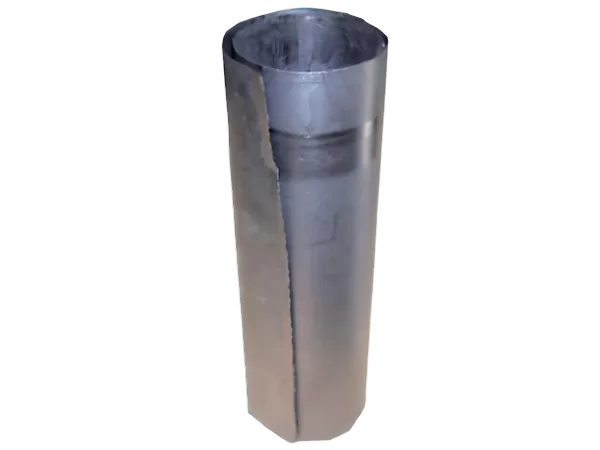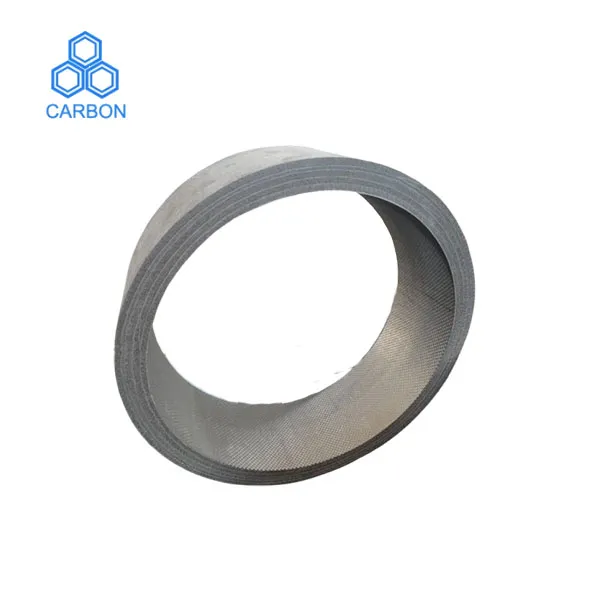Time: 2025-05-28 06:33:31 Source: Cangzhou Carbon Technology Co., Ltd.
In high-temperature and high-pressure environments such as steam systems, the choice of sealing material is crucial. Graphite sheets are widely recognized for their excellent thermal stability, chemical resistance, and sealing performance. However, not all graphite sheets are created equal. For sealing steam, flexible graphite sheets, particularly those reinforced with metal inserts, are generally considered the best option.

High Temperature Resistance: Flexible graphite can withstand extremely high temperatures, often up to 550℃(1022℉) in air and up to 700℃ (1292℉) in steam or inert environments. This is crucial for steam applications which involve high temperatures and pressures.
Excellent Sealability: Graphite is highly compressible and conformable, allowing it to fill microscopic irregularities on flange surfaces and create a tight, leak-proof seal. It also has a low relaxation rate, meaning it maintains its seal over time, even with temperature and pressure fluctuations.
Chemical Resistance: It's resistant to a wide range of chemicals, including most acids, alkalis, and organic compounds, making it versatile for various industrial applications.
Thermal Stability: Graphite gaskets exhibit excellent thermal stability, meaning they don't embrittle, change structure, or lose components under high temperatures.
This prevents creep or flow of the gasket.
No Binders/Fillers: Pure flexible graphite sheets are typically made without organic or inorganic binders and fillers, which can degrade at high temperatures and compromise the seal.
Longevity: Due to its inherent properties, flexible graphite offers good long-term sealing performance and resistance to aging, although oxidation can occur at very high temperatures in oxygen-rich environments.
Reinforced Flexible Graphite: This is often the preferred choice for steam due to the added strength and stability provided by the reinforcement. Common reinforcement materials include:
Stainless Steel Foil (Flat or Perforated): Provides enhanced mechanical strength, pressure resistance, and improved handling. Perforated (tanged) inserts create a strong mechanical bond with the graphite, preventing delamination.
Nickel or other metal inserts: Similar benefits to stainless steel, depending on specific application requirements.
High Purity Graphite: Look for graphite sheets with a high carbon content (e.g., 98% or 99.5% pure). Higher purity generally translates to better performance, especially at elevated temperatures and in critical applications.
Multi-layer systems: Some advanced graphite gasket materials, like James Walker's Supagraf HD Pro, utilize multi-layer designs with stainless steel and highly oxidation-resistant flexible graphite, often with impregnation to reduce leakage and improve handling.

Temperature and Pressure Ratings: Always check the manufacturer's specifications for the maximum operating temperature and pressure for the specific graphite sheet. Steam systems can vary significantly in their conditions.
Oxidation Resistance: While graphite is excellent at high temperatures, it can oxidize in the presence of oxygen, especially at very high temperatures. For extreme conditions, some graphite grades are specially treated for enhanced oxidation resistance (e.g., SGL Carbon's SIGRAFLEX APX2).
Industry Standards and Certifications: For critical steam applications, look for gaskets that comply with relevant industry standards like TA-Luft (for low emissions),
API 6FB (fire safe), ASME, EN, or JIS.
Flange Type and Surface Finish: The type of flange and its surface finish can impact gasket performance. Graphite's conformability helps with irregularities, but proper flange preparation is always recommended.
Gasket Thickness: The appropriate thickness of the graphite sheet is important for achieving optimal compression and sealing.
In summary, for reliable steam sealing, prioritize reinforced flexible graphite sheets with high purity, and always verify their specific temperature and pressure ratings against your application's requirements.